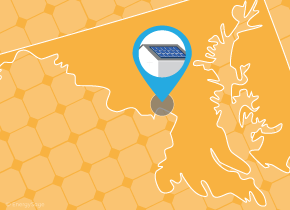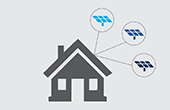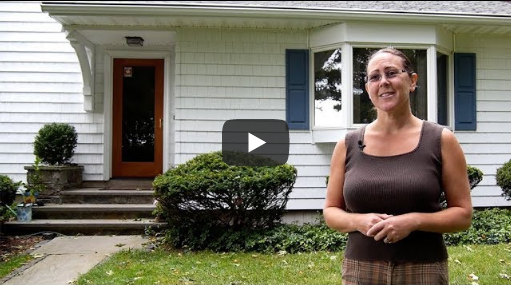History of solar policy in Washington D.C.
As of the end of 2018, SEIA reports that nearly 50 percent of the Washington D.C.’s electricity is produced by solar. While declining solar costs have been crucial for the recent surge in solar growth in the District, D.C.’s solar policies have been the key driver in developing the industry.
D.C.’s first notable solar policy is net metering, which passed in 2000. Throughout the nation, net metering has been vital for the solar energy industry by allowing residents to send surplus net energy to the electric grid and receive compensation for it on their energy bill. In D.C., residents with 100 kilowatt (kW) or smaller systems are credited for excess generation at the retail rate, providing a better incentive than other states that only compensate excess generation at the lower wholesale or avoided-cost rate. Amendments in 2008 and 2013 further bolstered the program for residents by extending the capacity limit for systems to 1 megawatt (MW), as well as by establishing virtual net metering.
In 2005, D.C. took a major stride in clean energy by passing the renewable portfolio standard (RPS). Nationwide, state energy requirements have been instrumental to the development of clean energy, with D.C. as no exception. The requirement of the District’s RPS has already been increased three times by the local legislature: as of the 2018 update, D.C. is fully committed to supplying 100 percent of its electricity by renewable energy by 2032, the highest RPS in the nation. What’s more, the RPS requires that D.C. set a solar carve-out of 5 percent by the same target date.
A major tool that D.C. is using to help meet its renewable goals is a Solar Renewable Energy Credits (SRECs) market. Created as a part of the RPS revision that established a solar carve-out, the purpose of the SREC market is to help utilities meet their RPS compliance levels. For D.C. residents, this means solar performance payments that are the best financial incentive to go solar: in 2019, SREC prices are around $0.50/kWh, meaning a 5-kilowatt (kW) system that generates 5 MWh per year could sell SRECs for as much as $2,500 annually.
Another notable clean-energy regulatory policy mechanism is the Sustainable Energy Trust Fund, founded in 2008. Succeeding the Reliable Energy Trust Fund (RETF), this public benefits fund is tasked with helping the state to use less energy and save money through providing financial incentives, investments, and technical assistance for clean energy causes. The funding for this program comes from a surcharge on all electric and natural gas ratepayers at a per-kilowatt-hour basis and adjusts its price each year.
While Washington D.C. has already realized a wide variety of policies to incentivize going solar, the state has not stopped supporting the industry. For example, policymakers helped make solar more accessible to residents by enacting the Solar Energy System and Cogeneration System Personal Property Tax Credit in 2012 to protect residents against increased property taxes that come with installing residential solar systems. Another example is 2016’s Solar Advantage Plus Program: this policy makes solar more accessible by providing eligible low-income residents a rebate of up to $10,000 to cover the full cost of a 3kW to 4kW solar system. Even better, the applicants will receive full ownership of the system and the energy produced, which includes the financial givebacks from net metering and SREC market.










